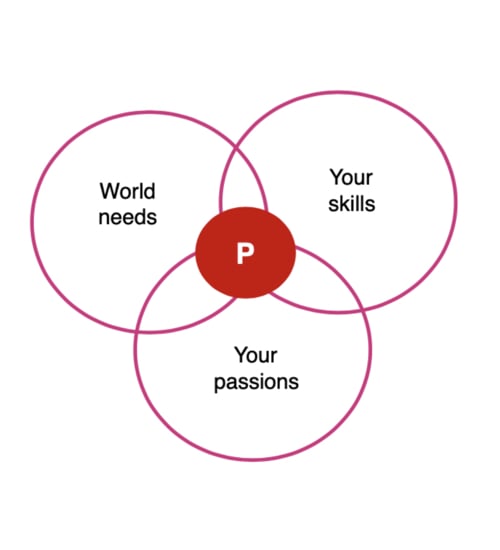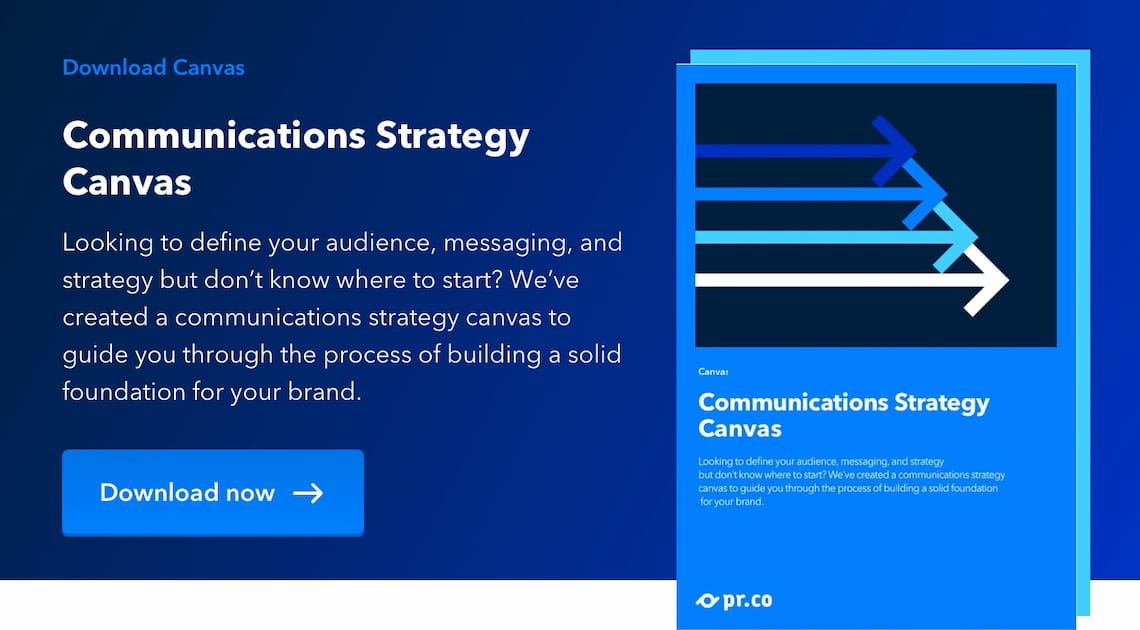Purpose-led brands will be the only survivors in this new era of consciousness. And those that use this to create meaningful action will be the ones that not only establish themselves as ready for the future, but will help make that future better too. Understanding how to lead this will be an increasingly essential skill in your toolbox, so why not start now. Here's Adam Stones, founder of A’DAM Communications, on how brands today can ensure long-term success by having a strong foundation.

Brand Activism
How marketers can create purposeful action to ensure long-term success
by Adam Stones, Founder of A’dam Communications - adamstones.co
There was a time just a few years ago when big brands could flog any old nonsense if it connected with the right audience. Then we all started demanding a little more and the response was a few heavily-PRed associations with worthy causes to distract us from the environmental or social impacts of their operations. We were all involved. But this approach to old school, siloed Corporate Social Responsibility (CSR) will thankfully soon be over. It is being pushed out by the idea that the very essence of the business must be affecting positive change in some way. We have entered the era of Purpose.
It is a term that is cropping up in boardrooms, marketing meetings, and investor portfolios with increasing energy around the world. Those brands that are identifying and activating Purpose well are seeing huge growth, whilst those that are going a little further - turning their good intentions into high profile meaningful actions - are securing even bigger returns. They are not only creating connections with their audiences, but they are also making them feel powerful, which just makes them want more. And this - whether you call it brand activism or issues advocacy - is opening up a new seam of opportunity for marketers, as long as you follow the rules...
But first, what is driving the change?
The Purpose revolution comes at a time of mounting desperation as to just how the hell we are going to address the mounting systemic challenges we see around us. Climate breakdown, insectageddon, plastic oceans, air pollution, social rifts… fun times! The scale of it is leading to increased anxiety that we are, well, screwed. Many people are turning to brands to step in and step up. The company Meaningful Brands found that three-quarters of worldwide consumers now expect brands to contribute to their wellbeing and quality of life. And according to author Simon Mainwaring, 91% of consumers would switch brands if another was Purpose-driven with similar price and quality.
Employees are also a significant driver, as businesses start to see how their commitment, wellbeing, and productivity responds so emphatically to Purpose. The Harvard Business Review reported that employees who derive meaning from their work have almost twice the job satisfaction and they are three times more likely to stay with their organization, fueling business success. Further, research published by Danone UK found that a quarter of British managers would take a pay cut for a purpose-led job, and half would leave if their company’s values and Purpose did not align with their own.
And it is success, long-term success, that attracts investors to purpose-led organizations. Larry Fink, CEO of Blackrock, the world's largest investment company (overseeing nearly $6 trillion) said:
“Without a sense of purpose, no company, either public or private, can achieve its full potential. It will ultimately lose the license to operate from key stakeholders.”
Fink underlined this by saying the new business leaders would drive this further, pointing to a survey by Deloitte that asked millennials what businesses should try to achieve. ‘Improve society’ was chosen by 63 percent more respondents than ‘generate profit’. The message from Fink is clear: find your Purpose or find the exit.
What are the rewards?
Purpose can increase sales figures, and decrease operational costs and risks (in everything from staffing to supply chains). In this way, building in Purpose is very connected to the idea of sustainability. In fact, it is very hard to have a genuinely purposeful brand that is not also committed to the sustainability - or at least the long-term viability - of people, places, and the planet.
Unilever is often cited as ‘Evidence A’ in this regard. Its purpose-led brands are growing at twice the rate of its other brands, and its vocal commitment to Purpose has helped it to become the number one employer of choice in its sector in 44 markets. As Hanneke Faber, President of Unilever Europe said:
“Companies with purpose last longer. Unilever has been around over a hundred years, and we want to be around for another hundred plus.” We believe brand activism works. Building value through values can make the world a better place and help companies thrive.”
Why does this matter for communications professionals?
One of the principal powers of Purpose to create success is its ability to establish trust, which just happens to be one of the key objectives of PR, marketing, or any other forms of brand communication. The latest European Communication Monitor reported, “The largest issues facing communications professionals for the next five years will be building and maintaining trust.”
Purpose gives brands a focus with which to deliver this. But fail to live up to the Purpose promise and the disconnect kills that trust. Take Facebook - Zuckerberg says ‘it was built to accomplish a social mission, to make the world more connected,’ but the UK’s Digital, Culture, Media and Sport select committee recently said the way the company leveraged those connections for its own financial gain made them nothing short of ‘digital gangsters’. Decreasing trust is resulting in diminished business performance.
Purpose will also rocket-fuel your team. The Monitor found that comms teams in purpose-led organizations were significantly more bought into the message they had to deliver (making the activation more authentic and powerful), had vastly improved job satisfaction (resulting in greater loyalty and commitment), and had a much better overall performance. Do you want the communications of your organization to be a success? (Well, of course, you do.) Then you must identify the Purpose and build meaningful activations around that. Often this will require ‘selling’ the aspirations internally but we, as communications professionals, have the potential to be the change agent that helps brands embrace the power of Purpose.
The COVID-19 pandemic proved that brands are expected to do more for society, with 62% of people saying their country will not make it through this crisis without brands playing a critical role. Here are 10 reasons why PR became more important during COVID-19.
Finding your Purpose
Once you make this commitment it is important to be authentic. There is no one-size-fits-all here. Purpose can range from the epic - such as helping to progress the UN’s Sustainable Development Goals - to the every day, giving your stakeholders opportunities to find happiness, human connections, or empowerment, or just having a strong commitment to improving employee health or skills. For any smaller brand concerned that Purpose must always be massive, be assured - you can start with the small stuff as long as it creates a connection. Once you have started, it is easy to imagine how the small seeds could grow - take a reusable water bottle, for example, marketed initially as simply a solution to plastic waste, and later - when confidence grows - taking action as a brand with beach clean-ups where its audience joins in, open-call design challenges around using recycled ocean plastic in its products and forming partnerships with other international sustainability change agents. Suddenly the engagement, support, and reach of your message is massive.
Purpose is likely to either be founding - where the brand was established to create a positive impact (think TOMS Shoes, Tony’s Chocolonely...) or found - where a positive connection has been established later. Dove is an example of the latter, where Unilever has used the concept of female empowerment through ‘real beauty’ to create the connection. Now, some argue that is little more than a marketing tactic to shift body wash, and yet the result of ‘empowerment’ is gained. It will be interesting to see how Dove’s messaging evolves as consumers pay closer scrutiny to Purpose.
Need some more inspiration? Check out 9 examples of socially conscious brands and their most impactful PR campaigns.
To find your organization's Purpose you have to go on an archaeological dig, looking back over the history of the business to find its original motivations and across the depth of its modern operations, to find its strengths and opportunities. You might consider surveying the whole company to get their buy-in early on. It can be helpful to consider a Venn diagram where Purpose is at the intersection of 1. what the world needs 2. what you do well, and 3. what are you and your audience passionate about. That gives you something genuine and relatable.

A Purpose should be both exciting and challenging if it is to lead to action. One of the most important points is that once the Purpose has been established it must be lived, from boiler room to boardroom. You can not communicate Purpose externally until it exists everywhere internally. It must live through the culture and operations - with strong internal communications - then find its way into products, services, and experiences, and only then can you consider external communications.
Brands as activists
Once the Purpose has been established, then taking action becomes a natural next step. I mentioned you can start small here, but let’s look at some of the big ones… The US outdoor retail cooperative REI famously closes its 143 stores every Black Friday and encourages its customers and employees to spend time outdoors with friends and family. REI’s actions give authenticity to the brand’s Purpose of connecting people to nature. In the process though it creates massive marketing success - last year, the campaign’s hashtag #OptOutside appeared in over 10 million Instagram posts.
Ben & Jerry’s is perhaps Unilever’s flagship Purpose-led brand. All its actions support its mission of ‘Peace, Love and Ice Cream’, and they are always created with local relevance - in the US, profits from its ‘Pecan Resist’ ice cream supports organizations that are standing up to the Trump administration’s “regressive and discriminatory policies” targeting minority groups, women, LGBTQ people, refugees, and immigrants. And in Australia - where it also supports Pride - they stopped selling customers two scoops of the same flavor until there was marriage equality. Around the world, Ben & Jerry’s has seen double-digit growth for many consecutive years.
One of the keys to the success of all these examples is that you must market the action, not the issue. There is no point in saying you care about something if you are doing nothing. Soon after Trump signed an order to temporarily close America’s borders to refugees, Airbnb launched an ad campaign at the Super Bowl titled ‘We Accept’ and offered free accommodation to people affected by the travel ban. Successful actions must be rooted in what your audience cares about. Nike would not have provided such high-profile marketing support to the American Footballer Colin Kaepernick if it was not confident the majority of its customers also stood behind his take-a-knee, er, stance. And the message they delivered perfectly connected with their Purpose of bringing out the dreams in all of us. In one advert, it reads ‘Believe in something, even if it means sacrificing everything.’ And the latest campaigns with Kaepernick go further, ‘Don’t ask if your dreams are crazy, ask if they are crazy enough’.
Of course, in the ‘purpose-rush’ from organizations wanting a piece of the prize, there are plenty of brands making a mess of all this. Gillette’s recent efforts were not only blunt but they backfired. Trying to evolve the ‘best a man can get’ tagline, they launched their campaign around ‘the best a man can be’, calling on all men to end the era of toxic masculinity and be real, rounded role models for the next generation. As one commentator said, for a company that makes shaving kits they didn't seem to have looked in the mirror, with commentators quick to point out that its series marketed at women had names like ‘Passion’ and Embrace’, were pink and cost more than the men’s ranges. They had tried to jump past the important steps mentioned above - establishing authentic Purpose - and competitors were quick to jump in and take advantage.
For any organization that wants to take action but knows it can not authentically do it themselves, collaborations can be essential. Teaming up with expert bodies on specific issues can give them your reach, influence, and operations whilst you get plugged into the front line of meaningful action and, frequently, new audiences. A previous client DP World, a global ports operator, was able to show its commitment to responsible practices and community support when using its expertise to work with United for Wildlife to address the illegal wildlife trade. A photo of the Duke of Cambridge at its London port was well received by the media because it was backed up by proven business commitments. And the many mental health campaigns I supported in the UK when working with Business in the Community (at Forster Communications) would not have reached the millions of people it did without close collaborations with the charity Mind and Time to Change.
So, what are the golden rules for marketers?
To sum up, we can agree the following rules for communicating purposeful action.
- Everyone - consumers, employers, investors - wants brands with Purpose
- And ‘action’ demonstrates you have a powerful Purpose
- BUT you can’t take action unless you genuinely have Purpose or you do worse than nothing
- So... firstly you must create an authentic Purpose, as clear as your name
- Then you have to embed this in your DNA and live it
- This leads to opportunities for action, for you and your stakeholder Only then do you market this action with powerful stories
Purpose-led brands will be the only survivors in this new era of consciousness. And those that use this to create meaningful action will be the ones that not only establish themselves as ready for the future but will help make that future better too. Understanding how to lead this will be an increasingly essential skill in your toolbox, so why not start now.
Adam Stones is an award-winning writer and the founder of A’DAM Communications; offering powerful communications solutions to brands that are committed to positive impact. In 2021, Adam published his book my new book 'Influence' (published by BIS, 2021) which aims to make strategic communication ideas and skills accessible to any aspiring leader. Having worked at two of the top communications agencies in London, Burson Cohn & Wolf and Forster Communications, Adam specializes in strategic communication, content marketing, brand building and PR.. Connect on LinkedIn or send an email



/Adam%20Stones%20email.jpg)


/Adam%20Stones%20email.jpg?width=100&height=100&name=Adam%20Stones%20email.jpg)
